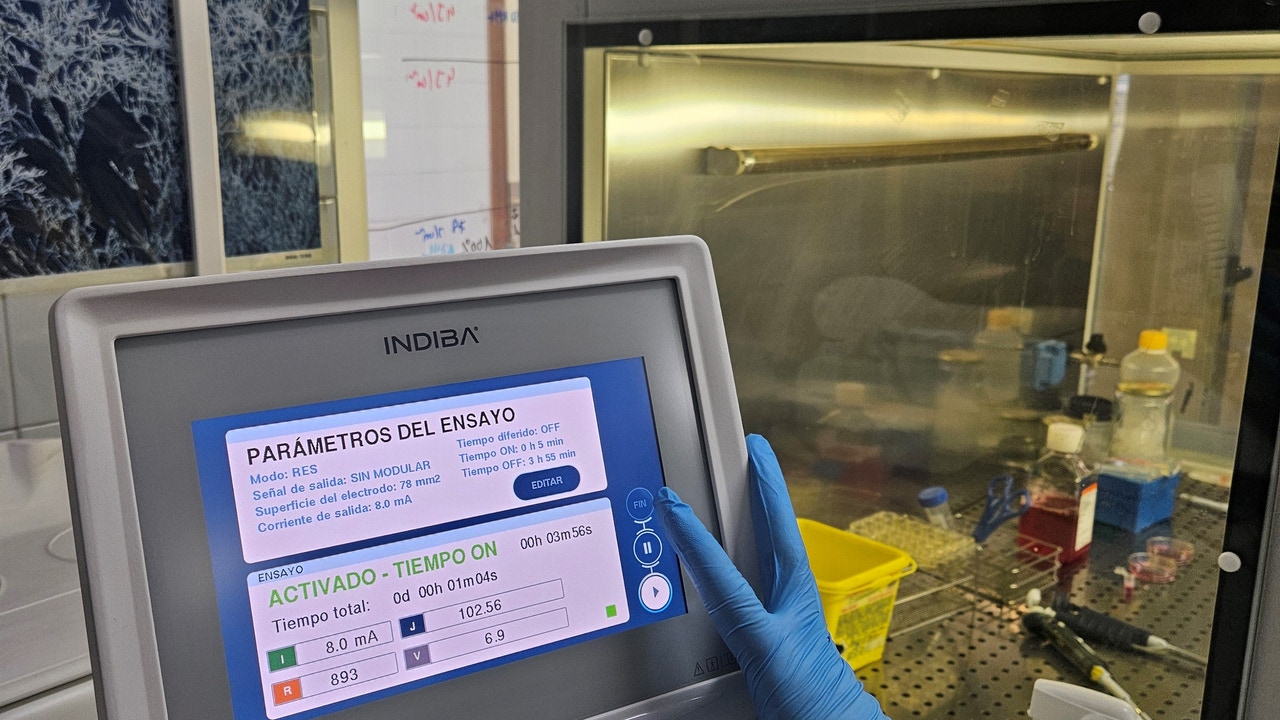They manage to regenerate tissue with the help of Indiba

It is mainly known for its application in the field of aesthetics and rehabilitation, but now a team of scientists from the Photobiology and Bioelectromagnetism Laboratory of the Ramón y Cajal Hospital in Madrid and researchers at its Health Research Institute have succeeded in doing so. “made in Spain” technology tissue regeneration.
We are talking about Radio frequency devices Indiba which, when applied to damaged skin, for example when there are problems with healing, promotes the proliferation and migration of keratinocytes and fibroblasts, that is, the main types of cells involved in skin regeneration.
An in vitro study, originally conducted by Alejandro Úbeda-Maeso and now by Maria Luisa Hernández-Boulet, proves that capacitance-resistive electrical transfer therapy (CRET), as it is called, They stimulate the proliferation of human stem cells in damaged tissues.
Studies on wound regeneration with this therapy in which He has been working for five years in a Madrid hospital, uncovered the biological basis by which this technology can accelerate the regeneration of tissue damaged by radiation therapy, which is difficult to achieve with previous methods, as well as promote faster healing of post-cancer wounds and other wounds that are difficult to heal. This rapid wound regeneration is essential for the physical and emotional recovery of patients, allowing them to resume their lives more quickly and also to avoid complications associated with radiation therapy (due to tissue damage caused by radiation) or reduce the healing time after it. surgery or skin trauma.
“We are very pleased after five years of training and We are able to significantly improve the condition of the skin of patients with pathologies that impede normal healing. wounds such as diabetic foot, vascular disease or cancer, post-radiation therapy, mastectomy and others. We offer therapy that will help physically and psychologically in the development of the disease during the critical phase, which is the end of treatment and the restoration of your life,” says Hernandez Boulet.
The integrity of the skin is affected by many diseases, such as cancer, diabetes or vascular pathologies.
Thanks to collaboration with a Spanish multinational corporation, at the decisive stage of tissue regeneration, the proliferation of mesenchymal stem cells occurs, which are present in all adult tissues and participate in three phases of wound regeneration: inflammatory, proliferative and remodeling, promoting healing..
On the other hand, studies conducted on skin cells have shown that this technology promotes proper healing of injuries by promoting the closure of the inner layers of the skin before the outer layers, avoiding abnormal healing, necrosis or infection. This opens up opportunities for treating chronic injuries.achieving complete closure of wounds that are not amenable to other treatment methods, and increasing the elasticity of damaged tissues.
So much so that Ramon y Cajal is currently working on a clinical trial on patients with chronic wounds., as soon as treatment efficacy in vitro has been demonstrated. According to Hernandez Boulet, “We are currently applying this technology to patients with difficult-to-heal wounds, such as vascular ulcers and diabetic foot ulcers, in collaboration with the Angiology and Vascular Surgery Service and the Dermatology Service of the hospital, and we are very hopeful about the results that can be obtained as a result of research.
The study demonstrates an acceleration of recovery, in addition to pain relief and anti-inflammatory effects.
“We started recruiting in January and the trial in March. We’ve been trying for a month and a half now. Job It will have about 150 patients and we are in the research stage. to see which ulcers respond best (about 20 patients) and then start another, larger one with better conditions that we found and which we hope will last a year or year and a half,” he continues.
But they also plan New applications: “Because this therapy has an anti-inflammatory effect at the dermal level, it can be used for pathologies associated with inflammatory skin processes, such as atopic dermatitis or psoriasis. We also saw that it reduced fibrosis, this was another study that was done on fibroblasts, and in hypertrophic scars they would be useful,” continues the expert.
